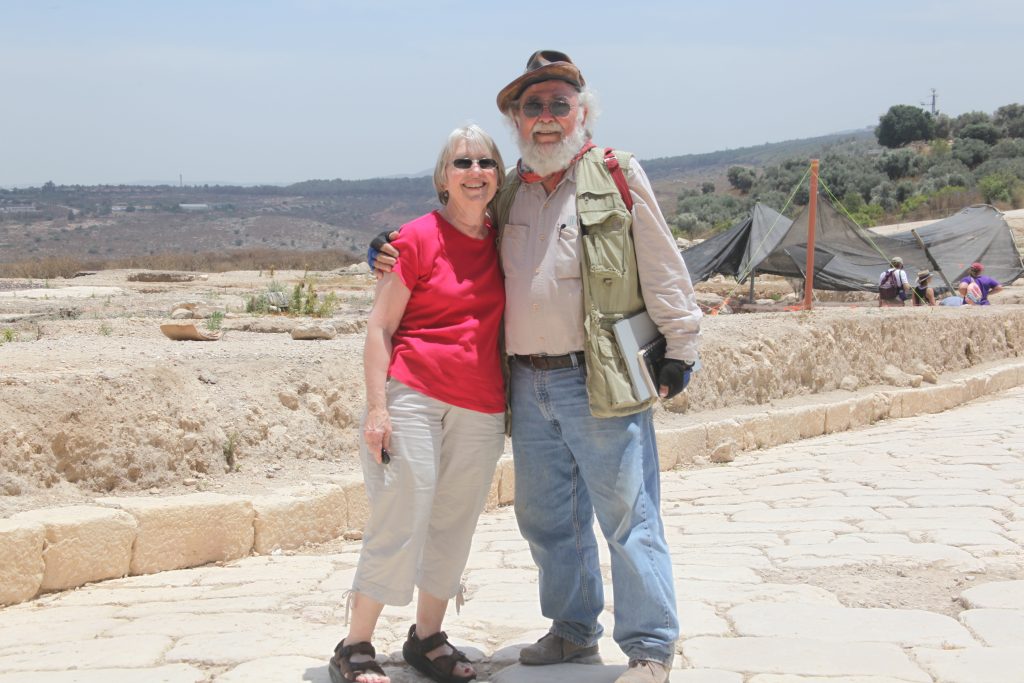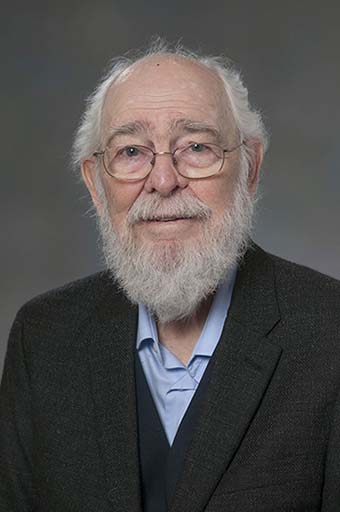
JAMES F. STRANGE: AN APPRECIATION
Written by Eric and Carol Meyers
James F. (Jim) Strange was our close collaborator for more than a decade and has also been a dear friend for more than four decades. This double relationship goes back to the late 1960s at Tel Gezer 
Thus our relationship deepened not only with Jim but also with his wife Carolyn, who served as Registrar for several seasons at Khirbet Shema‘ and Meiron (and subsequently had other roles on Jim’s later projects), and their children. Sometimes we even had a “kids’ tent” for the offspring. As soon as the children of the Stranges, Meyerses, and other staff were old enough to lug a gufah or manipulate a sifter, they were put to work in the trenches. For the Strange family (but not ours!), this early field experience apparently had a profound impact, for several of the young Stranges are now themselves professionals in archaeology. Perhaps there could be no greater testimony to Jim’s passion for archaeology, which we have always greatly admired, than the fact that he has passed it on to the next generation of his family.
Much of the preparation of the final reports in those early years was done in Durham, and Jim came often to stay with us at our home and work with us on the publications of our excavations and also on the book that Eric and Jim wrote together: Archaeology, the Rabbis, and Early Christianity (Abingdon 1981). When we were not with him in the Duke library or at our offices, we were at home laying out pottery and artifact plates—a task that had to be done manually in those days—on our dining room table. Because all of this was time consuming, Jim was with us so often, sometimes for weeks, that our daughters thought of him as a regular member of the family. At one point, our younger daughter, accustomed to seeing Jim every day in the summers and also during the weeks he stayed with us when working on publications, introduced him to others as her “second daddy.” It’s no wonder we often call him fondly “abunah,” a phrase coined early in the Upper Galilee years when we had to explain to our Druze workers that Jim was a man of the cloth and an archaeologist.
An important component of our Upper Galilee digs was our Field School, which, in addition to the field work, included daily pottery reading and registration, evening lectures and seminars, and weekend tours of our sites and also of others in the region. Jim was an indispensable part of the process: he drafted our invaluable and much used “Manual for Area Supervisors”; he explained our various procedures with characteristic wit and wisdom as well as good-humored patience; and in the lectures and tours he conveyed to both students and staff his deep knowledge of the region and its history. Moreover, he was savvy with the technology of recording as well as of digging; as a result we began to use a computer to record data as early as 1980.

Jim Strange, 2017 Annual Meeting
Just as important, Jim’s keen eye for ceramics contributed enormously to the development of a ceramic typology for the Hellenistic through Byzantine periods. In the 1970s, the pottery of these periods was not well known. Thus one of the chief aims of our years together was to lay the groundwork for a serious, stratigraphically focused approach to the archaeology of the Greco-Roman period; this endeavor would be based on a solid ceramic typology. We accomplished this goal in our years together in no small part because of Jim’s expertise. Another objective was to excavate small Jewish villages, especially ones with synagogues, rather than the urban sites favored by so many archaeologists at that time. Very few synagogue sites had been excavated in the years since the German team of Kohl and Watzinger conducted soundings at number of synagogue sites at the beginning of the twentieth century. By excavating four sites with synagogues, we were able to contribute to what became a rapidly growing and flourishing field—the excavation of classical-period sites in Galilee.
After excavation of those four Upper Galilean village sites, we turned to Lower Galilee and the great urban site of Sepphoris. Although we parted ways and organized separate excavation teams and established different research goals, at heart we all remained faithful Galileans. We all still feel a special kinship to Galilee, especially to the Galilee of early Judaism and Christianity. For, through surveys and field trips as well as excavations, we had become familiar with virtually every nook and cranny of the region.
We shared many archaeological and academic experiences with Jim, and we are delighted to be offering our appreciation to this volume celebrating his many notable contributions to the fields of archaeology, Galilean studies, and the history of ancient Judaism and Christianity. But what is most vivid and what has united us through the years is the close friendship we forged with Jim and his family in our digging days. This special relationship continued in no small measure because of our participation in meetings of the American Schools of Oriental Research (ASOR). Indeed, ASOR has been the instrument that has enabled us to see each other regularly after our field work together came to an end. At the same time, our loyalty to ASOR over the years is in no small measure a byproduct of the strong feelings we developed together in the field.
Jim Strange will be sorely missed. May his memory be for a blessing.
Excerpted and slightly revised and taken from his recent Festschrift: A City Set on a Hill: Essays in Honor of James F. Strange. Edited by Daniel A. Warner and Donald D. Binder. Mountain Home, AR 72654: BorderStone Press, LLC, 2014.